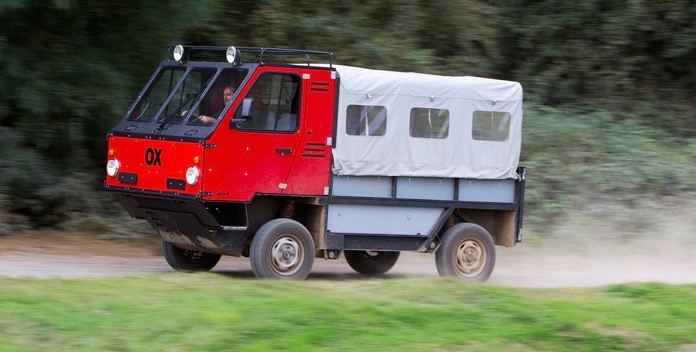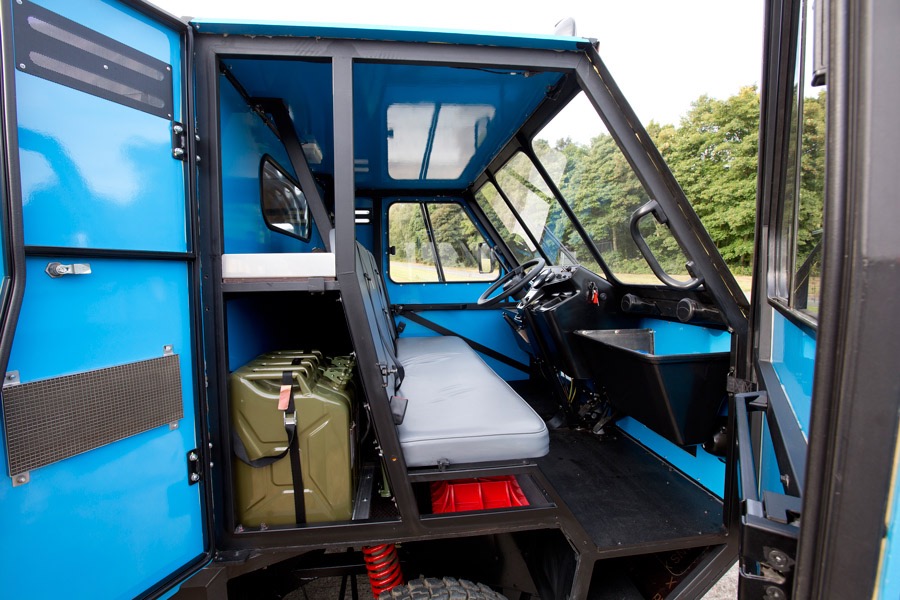
Did you know that Gordon Murray has designed a truck, that Ford has a joint venture with tequila-maker Jose Cuervo or that a team at my alma mater may have found a way to recycle rubber? And that’s just for starters as we catch up on some news that we shouldn’t have overlooked…
Gordon Murray is famous for designing some of the world’s fastest cars, from Grand Prix racers to the 240 mph McLaren F1. But now he’s designed a vehicle that may not be fast, but could be historic. It’s called the OX. The OX is designed to provide low-cost, all-terrain mobility in remote areas of the “developing world,” where Torquil Norman and his Global Vehicle Trust hope OX will “help communities to undertake a range of crucial daily tasks.”

OX is being heralded as the world’s first “flat-pack” truck because all components are contained in a kit, six of which fit within a cube-shaped shipping container. The trust says three people can create a flat pack in less than six hours or can assemble the entire truck from the parts in that pack in 12 hours.
“There is intense need for improved transport, for both everyday living as well as emergencies,” a trust news release said. “The OX has been designed specifically to tackle a host of transport challenges, and to undertake crucial daily tasks, such as collect drinking water and transporting grain, fertilizer or building materials. It is unlike any other vehicle and has no direct competitor – whether from a concept, performance or pricing point of view.”
OX is shorter than a full-size SUV but can carry more than two tons, or twice as much as typical pickup truck. It also is designed with a cargo bed that can carry three European pallets (which are 47.2 x 31.5 inches) or eight 44-gallon drums or as many as 10 people in addition to those in the three-person cab.

To avoid issues with left- or right-hand drive, the driver sits in the middle of a three-place bench seat.
OX was designed to provide plenty of ground clearance with steep approach and departure angles. The tailgate can be removed to serve as a loading ramp. Egg crate-style frames beneath the seats can be used as “sand ladders” beneath the drive wheels to enhance traction on soft ground.
Ford’s venture with Jose Cuervo does not encourage drinking and driving, but it is exploring the use of byproducts of tequila production as a source of more sustainable bioplastics for use in Ford vehicles in such things as wiring harnesses, HVAC units, storage bins and even exterior components.
Not only would such products come from a sustainable (non-petroleum) source, said Ford, but also could reduce vehicle weight and fuel use.
After growing for seven years, the heart of an agave plant is roasted, grinded and its juices extracted for distillation to produce tequila. Some of what’s left is used as compost and some to make paper or crafts. But Ford thinks it also could be used for bioplastics.
“There are about 400 pounds of plastic on a typical car,” Debbie Mielewski, Ford senior technical leader, sustainability research, said in a news release. “Our job is to find the right place for a green composite like this to help our impact on the planet… and it could have broad impact across numerous industries.”
By the way, Ford has done this sort of thing before: Once upon a time, Ford used a lot of wood in its cars and there was a lot of wood scrap. Rather than simply waste that scrap, Henry Ford and a relative, E.G. Kingsford, turned it into charcoal briquettes. Yes, Kingsford Charcoal Briquettes.
All cars need tires, but once rubber has been heated (vulcanized), its molecular chains become cross-linked and the rubber cannot be recycled (reheated and reshaped) without losing its durability and elasticity. Instead, old tires are shredded for playground surfaces or for use in asphalt, are burned for fuel, or put into landfills.
But a team at Northwestern University’s science and engineering schools thinks it has found a way for rubber to be recycled not just once but twice. It’s called nitroxide-mediated polymerization, involved commercially available and affordable components. The team believes its potential could be unlocked within a decade.
On to other subjects:
How did you celebrate last week when the National Highway Traffic Safety Act had its 50th anniversary? The act followed a year after the publication of Ralph Nader’s Unsafe at Any Speed and the need for making cars and highways safer.
Speaking of celebrating, I’m sure the 60-plus employees of Classic Motor Cars Ltd in England are celebrating after learning that the restoration company in Bridgnorth, Shropshire, has been given to them by its founders.
“I am nearer 70 than 60 and Nick Goldthrop, who founded this great business with me and has been largely responsible for where we are today, is now approaching retirement age, so we felt we had a duty to oversee a passing of responsibility, and who better than the workforce themselves?”
And thus the company, which currently has nearly two dozen restoration projects under way, becomes an Employee Ownership Trust under British law.

The recent and 16th annual smart times, a gathering of smart car owners and their small cars, was held for the first time in Germany, where 1,635 of the tiny vehicles took part in a parade through the streets of Hamburg.
A footnote:
I wrote last week that Chen Dongsheng, head of Taikang Life Insurance Company, has become the largest single stockholder in Sotheby’s (the public company with a 25 percent interest in RM Sotheby’s collector car auctions). Artnet News now notes that Sotheby’s has filed SEC paperwork that it will add an independent director to its board of directors — presumably to look out for Taikang’s interests) and that Taikang has agreed it will not add to its 13.5 percent holding in Sotheby’s until after November 6, presumably by then the new director will be in place.
Artnet News notes that this means “Taikang will not make any unexpected management moves or increase its voting power,” at least for the time being.













